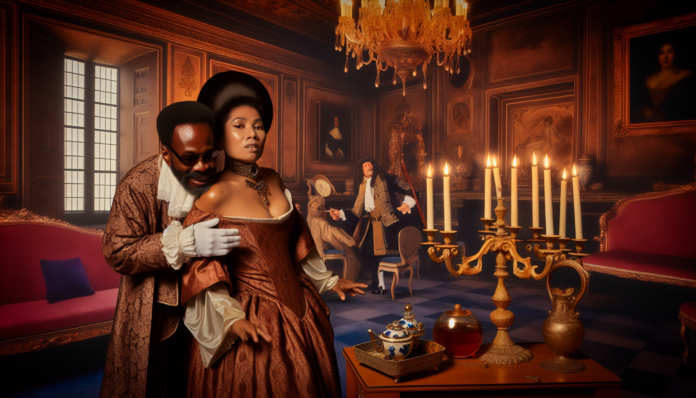Introduction
In the annals of history, few figures have wielded as much power—and provoked as much scandal—as King Henry VIII of England. Reigning from 1509 to 1547, Henry’s tumultuous love life not only shaped his reign but also altered the course of English history. His infamous pursuit of Anne Boleyn, which led to a seismic shift in religious and political landscapes, serves as a compelling entry point into understanding the scandalous interplay between personal affairs and national consequences in the 16th century.
The Time and Moral Attitudes
The early 1500s in England were characterized by strict societal norms, heavily influenced by the Catholic Church. Marriages were often strategic, meant to solidify alliances and ensure political stability. Love, while valued, was typically secondary. The era was rife with court intrigue, where royal adultery, though risky, was not entirely uncommon, providing fertile ground for both rumor and scandal.
The Scandal
The Boleyn affair began in earnest around 1525 when Henry—disenchanted with his first wife, Catherine of Aragon—became infatuated with Anne Boleyn. She was not only a lady-in-waiting but also a sharp-witted and ambitious woman, willing to challenge the status quo. The relationship quickly escalated, culminating in Henry’s desperate quest for an annulment from Catherine, which Pope Clement VII refused.
- Key Events:
- 1533: Henry secretly marries Anne after their affair leads to her pregnancy.
- Excommunication: The rejection from the Pope incites Henry to break away from the Catholic Church, establishing the Church of England in 1534.
- Anne’s Downfall: Less than three years after their marriage, Anne was accused of adultery, treason, and witchcraft, leading to her execution in 1536.
Henry’s words during this tumultuous time echo through history: “I see that by the tyranny of my affairs, I am driven to seek the new regime of a better world.”
Reactions of the Era
The impact of Henry’s actions was immediate and profound. His marriage to Anne triggered the English Reformation and led to a significant realignment of power, both ecclesiastical and civil. The populace was polarized; some lauded Henry’s defiance of papal authority, while others mourned what they perceived as a loss of moral integrity.
Criticism from contemporary sources was rampant. The pamphlet wars of the time flooded the streets, with writers like Sir Thomas More condemning Henry’s break from Rome. In stark contrast, some courtiers and commoners viewed the affair with a sense of intrigue, encapsulating the voyeuristic nature of court politics.
Moral and Cultural Analysis
The scandal of Henry and Anne illustrates a fascinating dichotomy in societal norms. While personal relationships among the ruling elite have always been scrutinized, the degree of public possession and involvement in royal affairs was relatively limited. The common man often faced strict societal boundaries in matters of love, even as kings indulged with relative impunity.
Consequences
Henry faced enormous political upheaval: the dissolution of monasteries, the establishment of the Church of England, and subsequent political realignments created waves that would ripple through history, influencing subsequent monarchs and their policies.
Modern Perspectives
Fast-forwarding to today, a similar scandal involving a modern political leader would likely provoke widespread outrage, immediate social media uproar, and demands for accountability. The concept of fidelity is often weighed alongside transparency, pausing to reflect on moral responsibilities and public trust—an intricate balance largely absent in Henry’s time.
Rather than simply being a tale of infidelity, the saga of Henry and Anne encapsulates the complex interplay between love, power, and societal expectations, continuing to captivate audiences with its blend of romance, betrayal, and the human thirst for power.

